Creating Dynamic Dashboards
Instead of hard-coding specific information (such as node names or resource IDs) in a panel, HELM has several ways to create more dynamic and interactive dashboards:
Using Variables to Create Dynamic Dashboards
Template variables are available in metric queries and panel titles and appear as a drop-down list at the top of the dashboard. Select from the list to filter the data the panel displays:
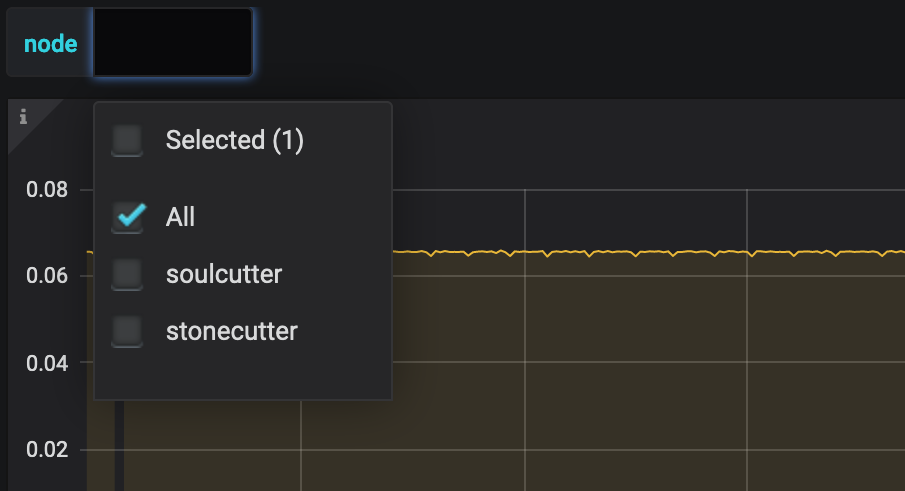
Each datasource has different template queries available. For example, the performance datasource has two available template queries:
-
specific node(s):
nodeFilter(NODEFILTERSTRING) -
specific resource(s) on a node:
nodeResources(NODEID[, id|label|name[, resource-type-name|*]])
See the following for entities datasource andc flow datasource template queries.
This procedure explains how to use variables in a query for a category of nodes (switches).
-
Select or create a panel. For this procedure, we created a panel that displays active TCP connections:
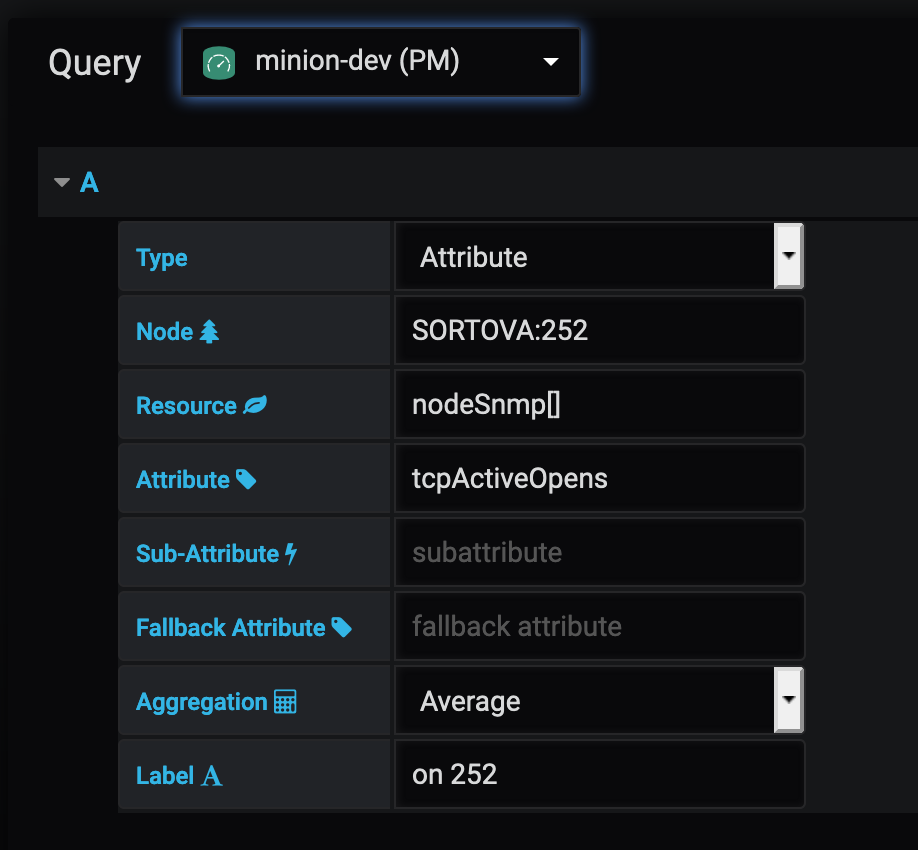
-
In the top right of the panel, click the dashboard settings icon and choose Variables>Add variable.
-
Specify the appropriate information, similar to the following. A preview of the values returned appears at the bottom of the screen:

-
Supported queries are in the form
nodeFilter($filter)ornodeResource(FS:FID)where$filteris any filter expression. In this case, we used thenodeFiltervariable to specify the nodes in the category "switches".
-
-
Click Add.
-
Click Save.
For more examples of variables in template queries, import the OpenNMS Network Interfaces Report sample dashboard.
Specify a Node Variable in the Panel
After creating the template variable, you need to update the panel to make sure data is available from all the nodes rather than a specific one, as originally configured.
-
In the panel, type
$nodein the Node field. -
Update the label to make it unique by typing the following:
nodeToLabel($node).-
A label must be unique to display data in the panel.

-
-
Save your dashboard.
-
Click the Node drop-down you created to select the nodes whose data you want to display:
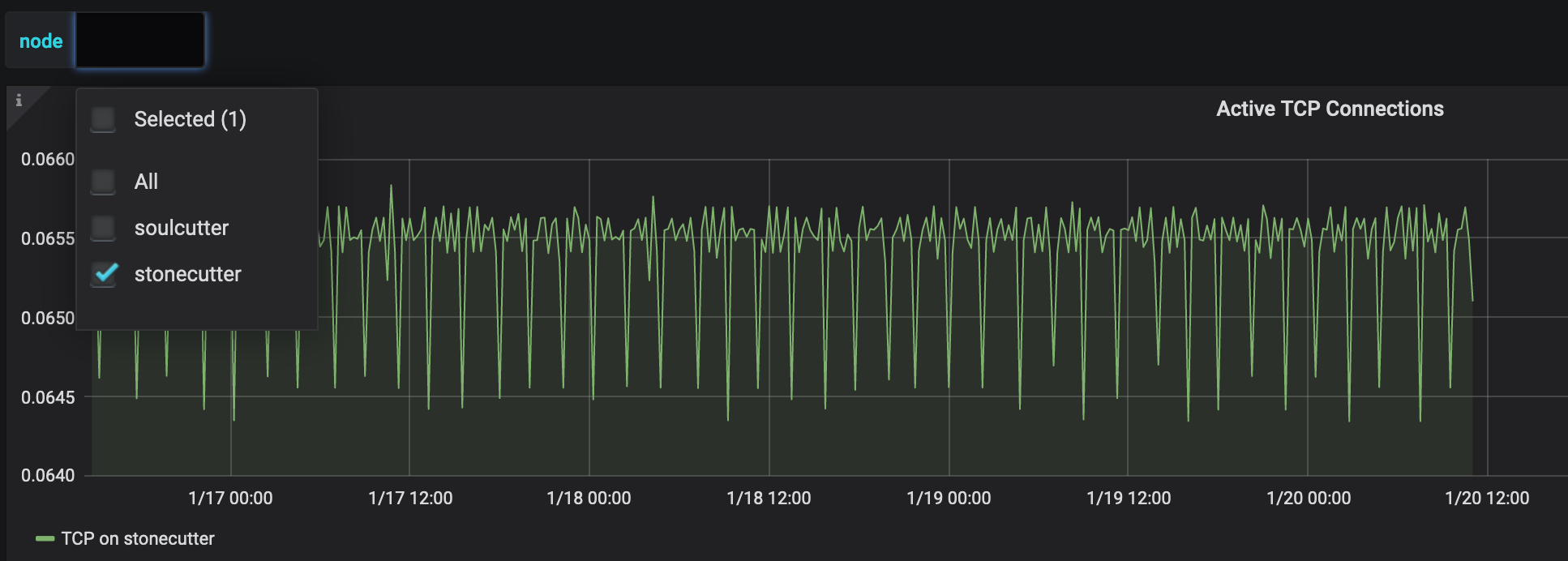
Creating a Filter Panel
A filter panel allows you to configure a series of variables to put on a dashboard. While template variables work with the performance datasource, the filter panel coordinates with any panels in the dashboard that use an entities datasource, to automatically apply filters that match those variables.
Before creating a filter panel, make sure you have a panel on the dashboard that uses an entities datasource (see create a panel).
This procedure creates a panel that will allow you to filter on alarm type and alarms that are acknowledged or in a situation.
To create a filter panel, follow these steps:
-
In the dashboard, click the
Add panelicon. -
Click Choose Visualization.
-
Choose
Filter Panel. -
In the Filter Columns area, choose an entities datasource.
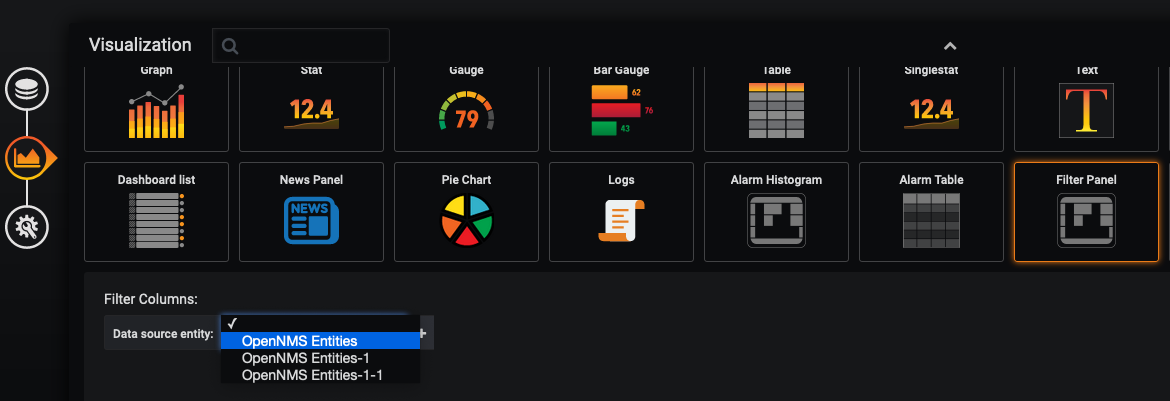
-
Choose
Alarms.-
Choose
Nodesto filter on nodes.
-
-
Click the
+sign and choose an attribute to filter on from the drop-down (e.g., Alarm Type, "Is Acknowledged"):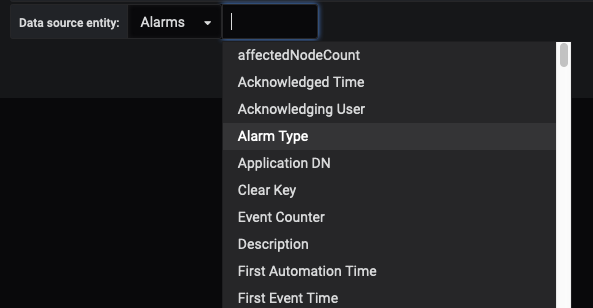
-
Specify information about the appearance of your filter field, including whether it is a drop-down list or a text field, and a custom label, if desired:
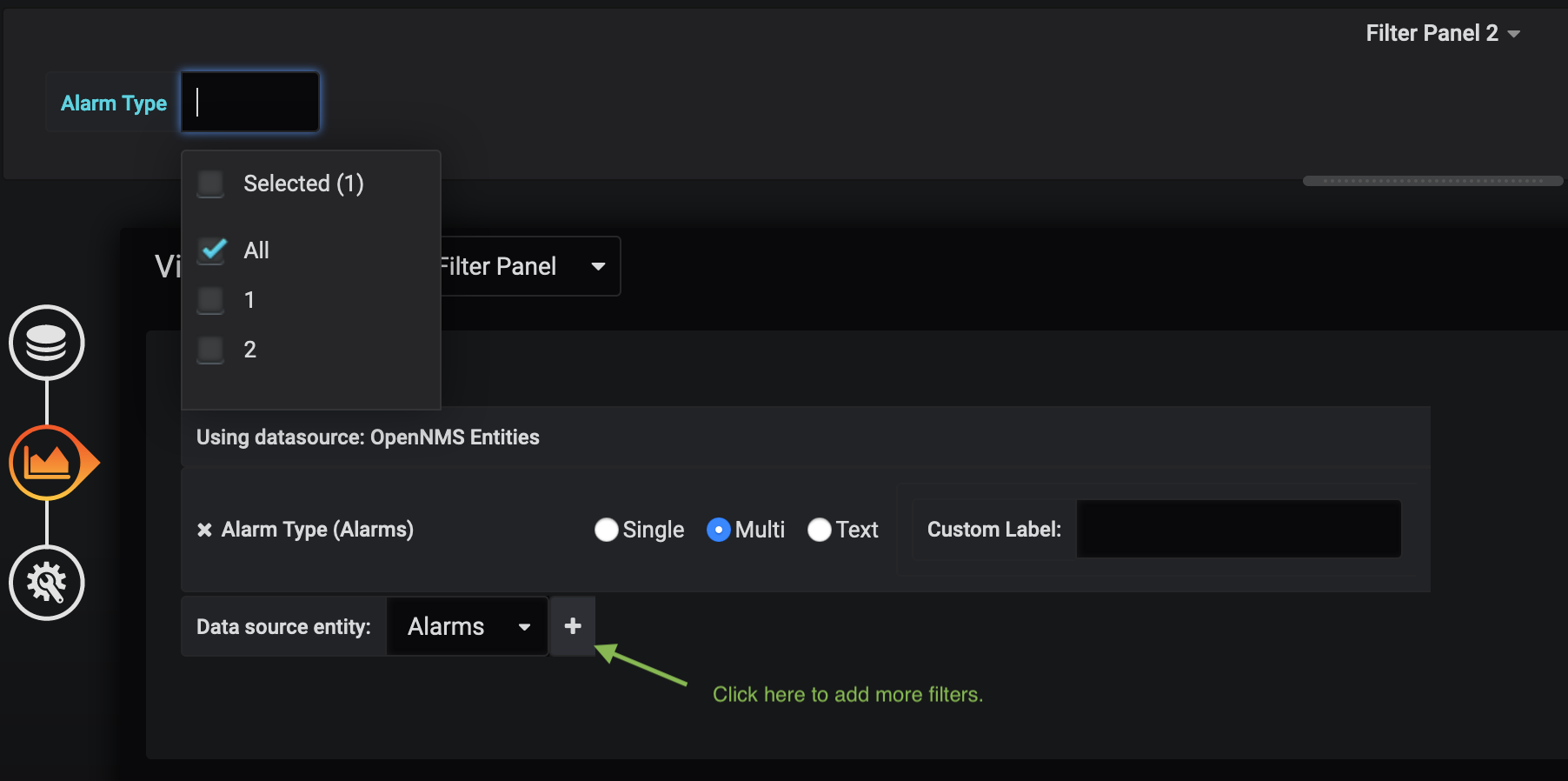
-
Add additional filters by repeating steps 4–7.
-
In the left menu, click the General icon to change the name of the filter panel and specify additional information.
-
In the top-right menu, click the
Save dashboardicon.
The filter panel appears on the dashboard.
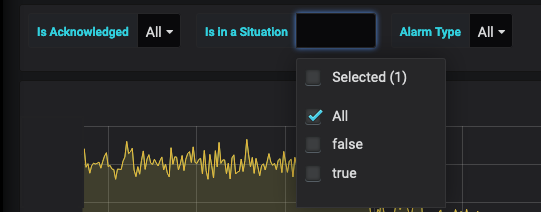
Selections made here will impact all panels in the dashboard that use an entities datasource. You can drag the filter panel to appear anywhere on your dashboard.